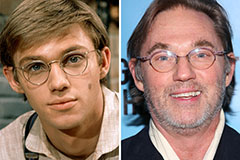Captivate the Jury: Vital Components of a Powerful Trial Presentation
In the world of lawful advocacy, the capability to captivate a court is paramount to the end result of a trial (trial presentation). Essential aspects such as recognizing the audience, crafting an engaging narrative, and mastering spoken and non-verbal communication are important parts of a reliable discussion. Furthermore, the calculated use aesthetic aids can substantially boost comprehension and retention of crucial debates. As these aspects intertwine, they form a cohesive approach that not only informs however also involves jurors on multiple levels. What specific strategies can truly transform a conventional discussion into an unforgettable experience for the jury?

Recognizing Your Target Market
Understanding your audience is an essential facet of reliable trial presentation. A successful presentation depends upon the capability to realize the demographics, worths, and predispositions of jurors. This comprehension notifies just how debates are framed, proof exists, and psychological appeals are crafted, guaranteeing that the message resonates with the jurors on an individual degree.
Research suggests that jurors come from diverse backgrounds and may have varying degrees of recognizing pertaining to lawful process. Furthermore, comprehending the jurors' potential predispositions and life experiences allows the trial presenter to expect arguments and address worries proactively.
Reliable test discussion also involves observing jurors' responses during the process. Engaging with jurors as people instead than a cumulative system is important in cultivating a strong link in the court room.

Crafting a Compelling Story
Crafting a compelling narrative is crucial in leading jurors with the complexities of an instance. A well-structured story not only streamlines complex lawful ideas but also involves jurors on a psychological degree, making the info a lot more relatable and remarkable.
To attain this, attorneys should begin by determining the core message they want to convey. This message should reverberate with the jurors' values and experiences, fostering a connection that goes beyond simple facts. The story should unravel realistically, providing events in a clear series to avoid complication. This sequential method can help jurors adhere to the development of events, stressing cause and effect.
Incorporating human aspects-- such as personal stories or narratives-- can better enhance the narrative's impact. These components stimulate compassion, permitting jurors to imagine the effects of the instance on realities. In addition, employing a constant style throughout the discussion enhances the major debate, making it simpler for jurors to maintain crucial points.
Ultimately, a compelling story changes a test presentation from a simple address of facts into a persuasive story that astounds the jury, motivating them to mull over with both reason and feeling.
Utilizing Aesthetic Aids
Integrating visual aids right into a trial presentation can significantly boost jurors' comprehension and retention of info. Aesthetic products such as charts, representations, photographs, and video clips can change intricate legal concepts and evidence right into quickly digestible layouts. By involving numerous senses, these aids permit jurors to picture the situation's key components, making it less complicated for them to adhere to along and comprehend elaborate details.
In visit their website addition, properly designed visual help can highlight crucial factors and emphasize connections between various pieces of evidence. For example, timelines can successfully show the sequence of occasions, while annotated images can make clear particular details relevant to the instance. This not only aids in understanding but additionally enhances the narrative offered by the attorney.
Overly complex or cluttered visuals may bewilder jurors and detract from the message. Eventually, reliable aesthetic communication can be a powerful tool in convincing jurors and assisting them get to educated conclusions.
Mastering Verbal Interaction
Reliable spoken communication is critical in a trial discussion, as it works as the key means whereby lawyers share their disagreements and get in touch with jurors. Grasping this ability entails clarity, persuasion, and interaction. Lawyers must verbalize their factors clearly and concisely, avoiding legal lingo that might perplex jurors. Simpleness in language cultivates understanding and aids jurors realize intricate concerns offered throughout the trial. look at here now
Furthermore, tone and pacing considerably impact how messages are received. A certain tone shares authority, while ideal pacing enables jurors to take in info without really feeling bewildered. Lawyers need to likewise vary their singing inflections to highlight bottom lines and keep jurors' passion throughout the presentation.
In addition, the organization of spoken arguments is necessary. Structuring the narrative realistically and coherently assists jurors comply with the attorney's logic, making it easier for them to retain vital info. Using persuasive strategies, such as narration, can additionally boost the psychological resonance of the disagreements provided, thus creating an extra profound connection with jurors.
Eventually, grasping spoken communication not only reinforces an attorney's case but also fosters count on and connection with the court, substantially improving the opportunities of a positive judgment.

Involving With Body Language
Nonverbal interaction plays an essential function in test discussions, frequently conveying messages that words alone can not share. Body movement, including gestures, posture, faces, and eye contact, significantly influences how jurors perceive the trustworthiness and sincerity of the speaker. A certain position, with shoulders back and an open position, can instill trust, while closed-off body language may recommend defensiveness or unpredictability.

Faces must reflect the feelings connected with the instance, enhancing the narrative being presented. For circumstances, a genuine expression during an emotional minute can generate empathy and strengthen the sob story. Eventually, mastering body movement is crucial for effective test presentations, as it boosts spoken communication and develops a compelling visibility that resonates with the jury.
Conclusion
Finally, mesmerizing the court requires a strategic technique that includes comprehending the audience, crafting an engaging narrative, utilizing aesthetic help, grasping verbal interaction, and engaging through body movement. Each element plays an important duty in developing an effective test discussion that reverberates with jurors on both emotional click to investigate and intellectual degrees (trial presentation). By integrating these elements properly, attorneys can considerably enhance their ability to persuade and affect court decision-making
 Melissa Joan Hart Then & Now!
Melissa Joan Hart Then & Now! Richard Thomas Then & Now!
Richard Thomas Then & Now! Mary Beth McDonough Then & Now!
Mary Beth McDonough Then & Now! Dawn Wells Then & Now!
Dawn Wells Then & Now! Rossy de Palma Then & Now!
Rossy de Palma Then & Now!